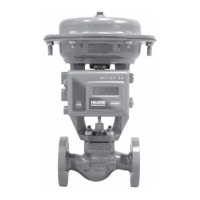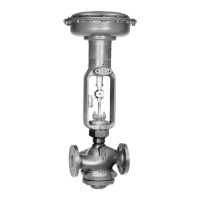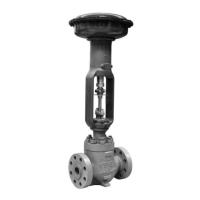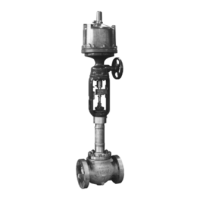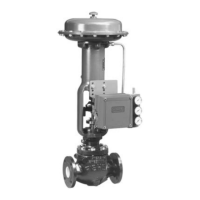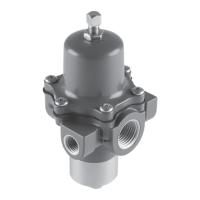Instruction Manual
D103597X012
D4 Valve with easy-Drive Actuator
October 2017
5
CAUTION
To avoid product damage, inspect the valve before installation for any damage or any foreign material that may have
collected in the valve body. Also remove any pipe scale, welding slag, or other foreign material from the pipeline.
1. Before installing the control valve assembly, inspect it for any damage and for any foreign material that may have
collected in the valve body.
2. Remove any pipe scale, welding slag, and other foreign material from the pipeline.
3. The control valve can be installed in any position, but normally the actuator is vertical above the valve. Install the
valve so the flow direction arrow on the side of the valve indicates the direction of the process flow.
4. Install the valve following local and national piping codes when they apply to the application. For screwed
connections, treat the external pipe threads with a good grade pipe compound. For flanged valves, use suitable
gaskets between valve and pipeline flanges.
5. If continuous operation is required during maintenance and inspection, install a conventional three‐valve bypass
around the valve.
Special Instructions for “Safe Use” and Installations in Hazardous
Locations
ATEX/IECEx
WARNING
To avoid static discharge from the enclosure, do not rub or clean the enclosure with solvents. To do so could result in an
explosion. Clean with a mild detergent and water only.
The enclosure is nonconducting and may generate an ignitioncapable level of electrosatic charges under certain extreme
conditions. The user should ensure that the equipment is not installed in a location where it may be subjected to external
conditions (such as highpressure steam) which might cause a buildup of electrostatic charges on nonconducting surfaces.
Additionally, cleaning of the equipment shall only be done with a damp cloth.
To avoid damage to the enclosure, when screws are fully tightened into blind holes in enclosure walls, with no washer
fitted, at least one full thread shall remain free at the base of the hole.

